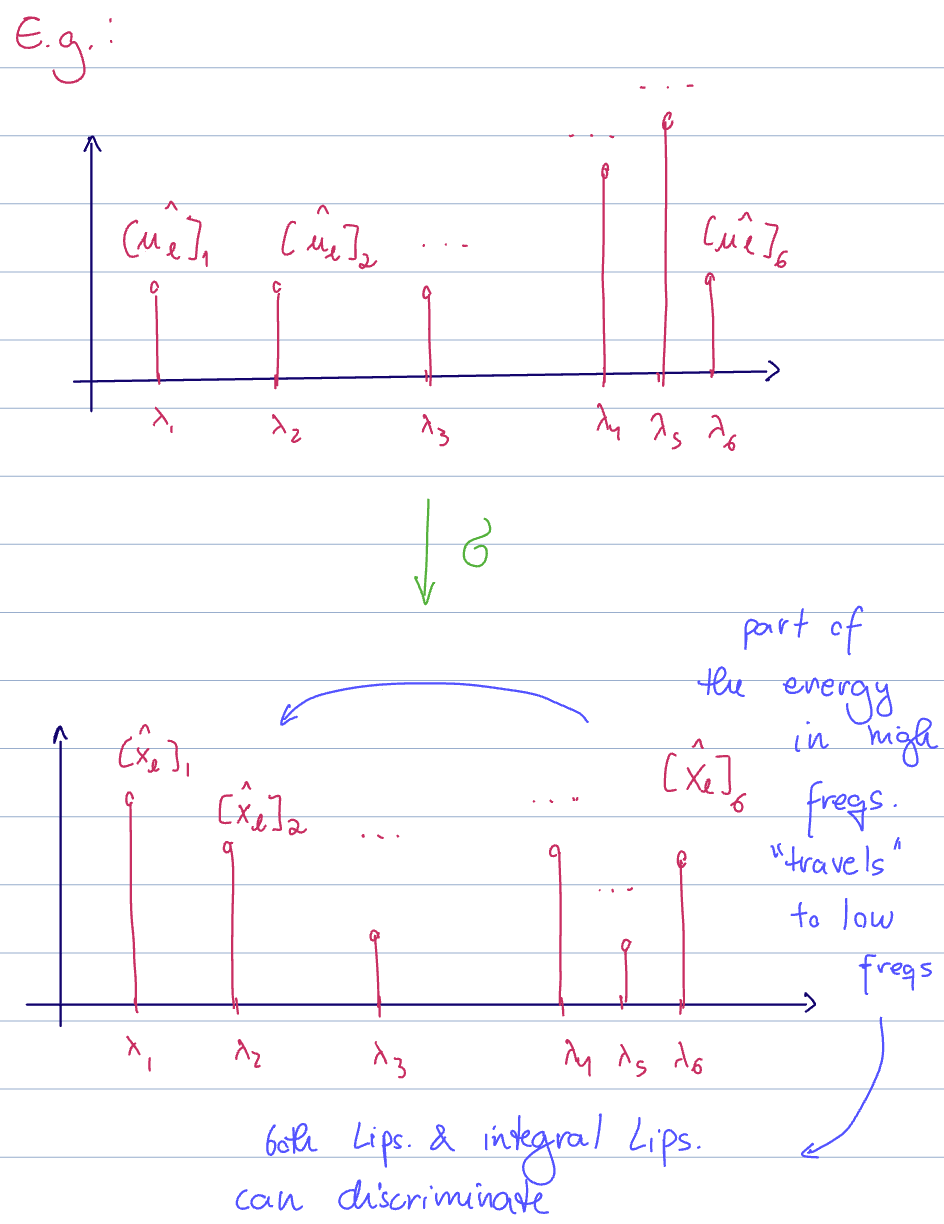GNNs perform better than their constituent filters
[[concept]]
GNNs can perform better than their constituent graph filters. That is, they are more stable for the same level of discriminability, and more discriminative for the same level of stability than a direct composition of the same filters.
This is because the nonlinear activation function "scatters" the signal across the spectrum, moving some high frequency information to lower frequencies and vice versa. Since both lipschitz graph filters and integral Lipschitz filters can discriminate at low frequencies, the mixing from the nonlinearity helps the GNN account for a wider range of the information.

- we first get a response
from the spectral representation of a convolutional graph filter - after the nonlinearity, some of the energy modes to other areas of the spectrum
Some of the energy in high frequencies "travels" to low frequencies. Both lipschitz graph filters and integral Lipschitz filters can discriminate at these low frequencies.
If any of our task depends on high-frequency data, then this scattering can help us perform well by moving some of the high-frequency information into the lower frequencies, where we have both stability and discriminability